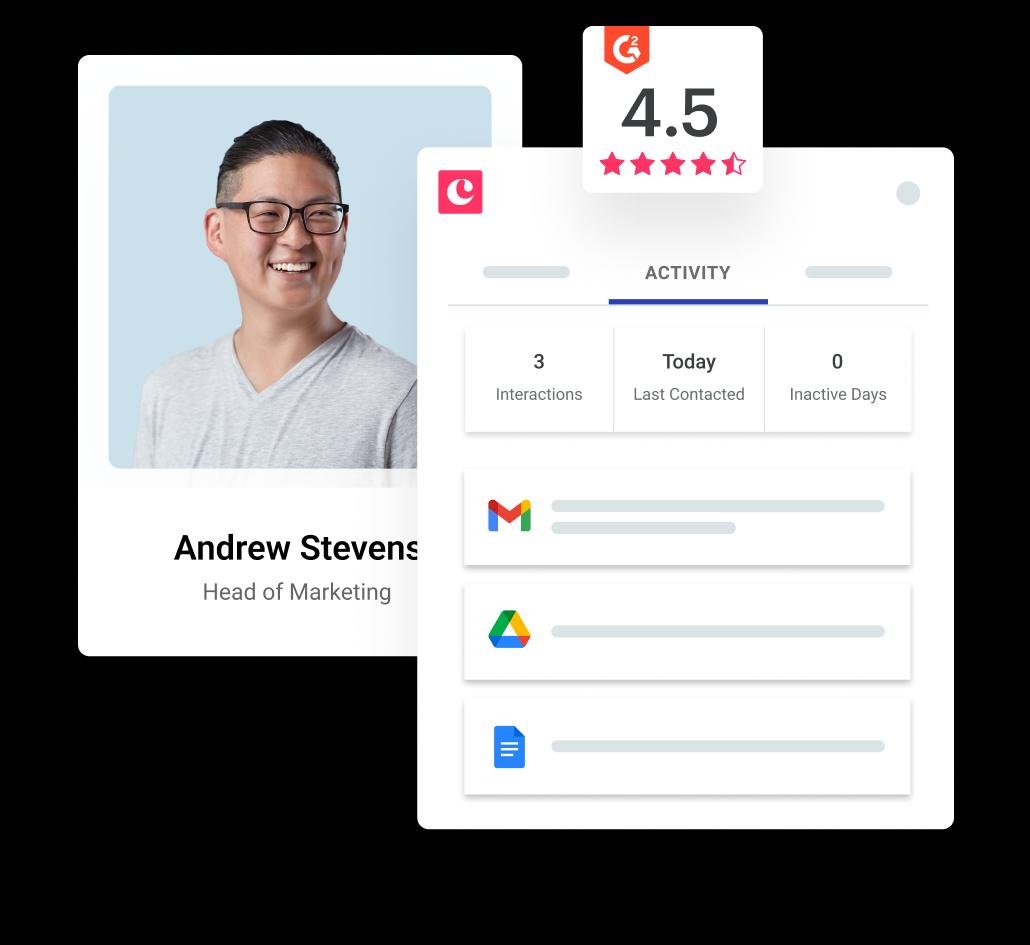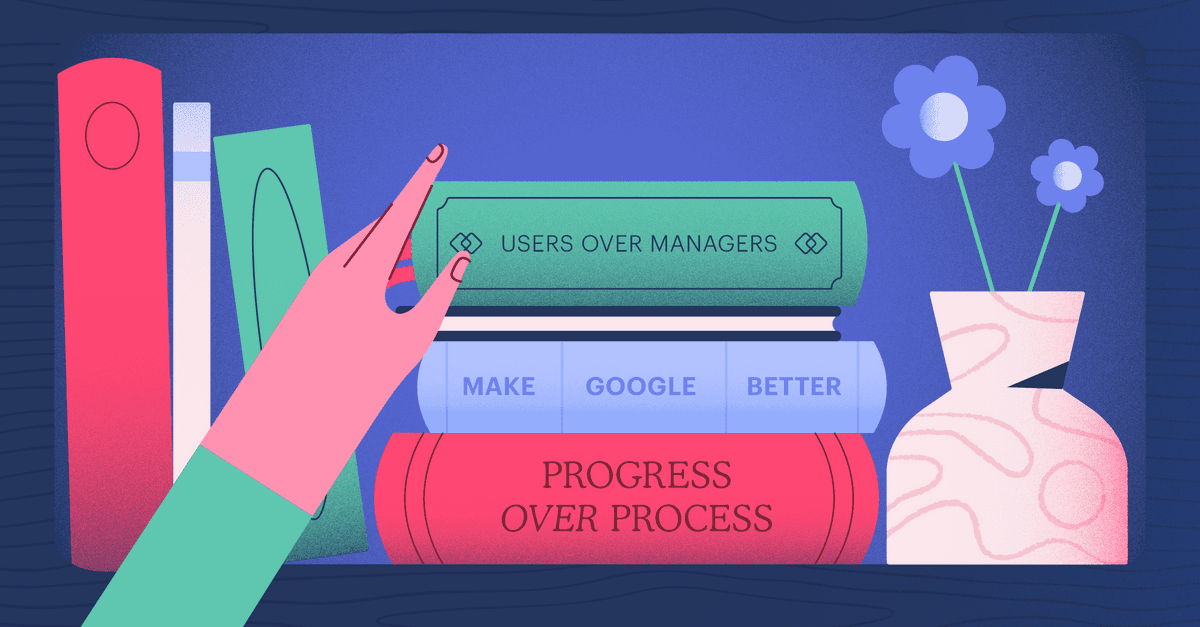
Katrina Oko-Odoi
Sr. Content Marketing Manager
First-party data will always reign supreme. But now, as the death of the third-party cookie looms, first-party data is more than just a nice-to-have. It's a must-have.
Companies of every size must figure out how to prioritize first-party data—and quickly. But one thing marketers know well is that collecting first-party data is a lot harder than getting third-party data.
Which is why cookie deprecation is causing some concern in the marketing industry. Our Marketing Relationships Survey found that more than half of marketers believe the death of third-party cookies will affect their marketing strategies. Still, many others remain optimistic, especially those who are confident in their company’s use of first-party data.
Our team at Copper is also feeling positive vibes about this move towards first-party data. We’re confident that it’s a good one, especially if you're a small or medium-size business (SMB).
Here's everything you need to know about cookie deprecation and first-party data (including how to gather your own).
Cookie deprecation is heading our way.
Cookie deprecation isn't a new concept. Safari blocked them in 2017, and Firefox blocked them in 2019. But Google's move to end third-party cookies is what's causing all the commotion because Google holds 64% of the browser market share.
Let's back up a minute. What are third-party cookies, anyway? Cookies are small text files that contain tiny pieces of data, like usernames and passwords. These cookies are used to identify specific users and their activities.
Website owners can use cookies to track users across the web and collect information about their activities. They do this to personalize experiences and provide better segmentation.
For example, after you visit a website, that website's cookies will be saved to your browser. The attribution ensures that the website will know it's you when you revisit the site in a few days. (This is how your Amazon shopping cart can save items to your cart to appear when you return three days later).
Third-party cookies are a little different in that a person doesn't have to visit a website to have the cookies set. Instead, publishers add third-party components to their website, like chatbots, social plugins and ads. Those third-party components can now identify the user.
For example, let's say you went to a website to read an article, and there was an embedded YouTube video in the article. If you clicked on the YouTube video, then a cookie from YouTube will be added to your browser, and now YouTube can also track you.
So, third-party cookies allow third parties that you didn't directly interact with to follow and track your activity.
Third-party cookies resulted in a lot of annoying (and creepy) advertisements. Suddenly, the same ads were relentlessly following users around the web. Who wants to see the same ad for those wedges, or that watch, 50 times just because you looked at the product once? Even more annoying if someone else in your household did, and now you’re being retargeted because of their “window” shopping.
Many people feel that this kind of marketing is invasive and impersonal.
These privacy concerns caused Safari and Firefox to take action, and they’re the reason why Google will no longer support the use of third-party cookies beginning in 2023.
To explain their decision, Justin Schuh, the director of Google Chrome engineering, said,
"Users are demanding greater privacy—including transparency, choice and control over how their data is used—and it's clear the web ecosystem needs to evolve to meet these increasing demands."
The long and short of it is that cookie deprecation is happening, and come 2023, companies will only have first-party data to rely on—which we think is a really, really great thing.
First-party data is just better.
Around 80% of marketers reportedly depend on data from third party cookies. That’s a whole lot of marketers.
The funny thing about third-party data collection, though, is that you're essentially just collecting raw data. So, unless you have a lot of third-party data, a data scientist and the technology (a customer data platform or CDP) to make sense of the raw data, that’s all it is: a bunch of raw data.
When you really think about it, third-party data is most useful to the giants, the Facebooks and Amazons of the world. For SMBs, third-party cookie collection is often just a waste of valuable resources.
But, even if you have the budget, team and tech to utilize third-party cookie data and are capable of collecting enough for it to be worthwhile, it's not nearly as valuable as first-party data in the age of consumer privacy.
A case in point? First-party data creates twice as much revenue in ads and significantly improves marketing cost efficiency. It's more accurate, more exclusive, creates better personalization, and increases your marketing relevance substantially.
With first-party data, you don't have to do any analysis to understand customer behavior and preferences. Instead, the customers willingly opt-in and tell you everything you need to know.
These prospects know and trust your brand because they have an established relationship with you. The data is better because it's obtained from actual customers and prospects interested in what you have to offer.
The superiority of this type of data is probably why 88% of all marketers agree that first-party data is a huge priority for 2021. If first-party data is so much more superior, why isn't everyone already using it? Well, because gathering first-party data isn't easy without a strategy in place.
5 steps for gathering first-party data before the death of the cookie
Gathering and using first-party data is a two-part process:
- Part One: Collect the data
- Part Two: Make sense of the data
Here are 5 steps for how to do both ahead of the impending cookie deprecation.
Step 1: Determine your collection pathways.
There are several places to collect first-party data, including:
- Your website
- Apps
- Surveys (online and offline)
- Social media
- Contests
- User registration on your website
- Virtual chatbots on your website
- Loyalty programs
- Games
Figure out which pathways make sense for your organization and start developing them. Be sure to have opt-in fields wherever you expect to collect data and test and tweak your collection process until you get it just right.
Step 2: Develop an attraction and inbound strategy.
After you have pathways designed, you need to organically attract people to them. This means privileging inbound marketing and creating engaging content to attract people to your brand.
Some examples include:
- Informational material (like infographics and eBooks)
- A company blog
- Educational videos
- An engaging social media strategy
- A company podcast
- Promotions
The end goal is to attract people to your assets and pathways so they willingly share their first-party data for your brand to use.
Step 3: Analyze and expand your insights.
Some first-party data will be straightforward. For example, a person signs up for your email newsletter and fills out a form that gives you the main information you need to know about them. But other types of data will be a bit murkier.
Say you collect user data from a contest. This might be a little harder to analyze since it is more general data. You’ll have to find ways to expand your insights to make more sense of your data through nurturing and analysis.
For example, you might have a whole pool of people you only have basic contact information for, and you want to know their annual income. You can do things like surveys and targeted ad campaigns to help gather these demographics.
Or you can utilize tools like your CRM to analyze your first-party data and make it work for you. Using CRM analysis, you can uncover new opportunities, lead sources, purchase data and more to enrich your first-party data.
Step 4: Nurture the data.
Like third-party cookies, first-party data is just data if you don't do something with it. At some point, you need to redirect your attention to converting that data into actual leads through nurturing activities. Your CRM software is a terrific tool for lead generation.
You can use your CRM to help obtain and track your first-party data and use it to start building meaningful relationships with prospects. Within your CRM, you can store basic information for each prospect and build on it until they become leads. For instance, you can set up email sequences within your CRM to engage prospects and nurture them with targeted information.
If you plan to collect large amounts of incomplete first-party data, you might consider something a bit more robust like a CDP in addition to a CRM, which will allow you to compile a lot of first-party data together to segment, analyze, and compile it so you can better understand who to advertise to and how to advertise to them.
Step 5: Divert resources and prioritize first party data.
Don't wait until the last minute to divert resources towards first-party data. The “death of the cookie,” as some are calling it, means that companies will need to create a strategy for collecting their own first-party data and learn how to use it.
The earlier you start developing first-party data collection methods, the better prepared you'll be in 2023 when Google no longer supports third-party cookies.
Take time today to divert resources away from programmatic advertising and cold outreach and point it towards nurturing relationships through the customer experience. Start talking to your existing customers and providing an awesome customer experience.
Focus on personalization and building meaningful relationships with your customers—a move that will far outlast cookie deprecation.
Don't fear the death of the cookie
The death of cookies is happening. But, if you're an SMB, that's not a bad thing. Instead, it's a wonderful opportunity to prioritize first-party data and start building more meaningful connections with your prospects.
After all, first-party data performs better than third-party data—plus, consumers prefer knowing where and how their data is being used.
Don't wait until 2023 to start investing in your first-party data strategy. Instead, start building better connections today.
If you'd like a relationship-centric CRM to help you sail through the death of third-party cookies, Copper is the perfect choice. We've been prioritizing relationships over empty data since the beginning, so we're excited to help our customers navigate this new change.










